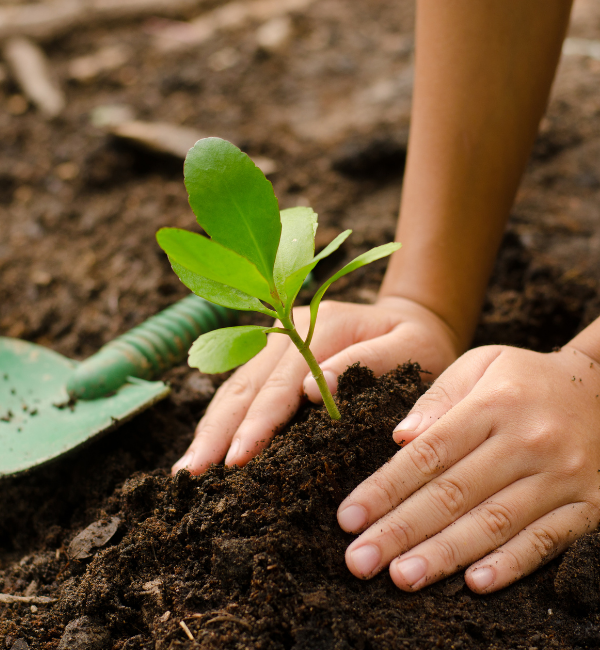Storytime - Pollution in Plants


This workshop consists of two parts: a reading of the "The Last Tree" by Maria Quintana Silva and Silvia Alvarez followed by the hands-on activity. Using some very ordinary items at home, we're going to learn how plants are important in the fight against climate change as they help absorb pollution from the environment to keep it safe and clean.
This storytime virtual outreach activity is split into a pre-activity document - i.e., workshop overview and list of materials with preparation instructions for both the volunteer and educator, and PowerPoint presentation with presenter notes to help lead the workshop virtually.
This workshop discusses topics, which can lead to feelings of eco-anxiety among volunteers, educators and youth if not presented in a thoughtful manner. The most important things to remember are to be honest, hopeful, developmentally appropriate, and action oriented. This workshop was created with these guidelines in mind. For more details, refer to the volunteer resource, Being Conscious of Eco-Anxiety.
What You Need
Physical Requirements
- You will need a space that will allow you to comfortably lead the virtual quiz, a stable internet connection, a desktop computer with 1-2 desktop screens, based on your preference, a webcam and a headset with microphone.
- Site coordinators and volunteers participating in online programming must ensure the following if video is recorded or shown: wearing a Let’s Talk Science t-shirt, having a neutral background and trying to avoid open backgrounds where other people may suddenly be visible.
- This activity works best with a partner who can monitor the chat for questions.
Materials
- Short celery stalk with leaves
- Knife
- Clear container
- Food dye (darker colours work best - red, blue, orange, purple)
- Water
Pre-Activity Document:
Presentation:
Safety Notes
Ensure you are familiar with Let's Talk Science's precautions with respect to safe delivery of virtual outreach to youth. These precautions can be found in the manual for this activity.
What To Do
- Reading of "The Last Tree" by Maria Quintana Silva and Silvia Alvarez.
- Doing the Activity:
- Fill the container with water.
- Add 8-10 drops of food dye to the container.
- Ask an adult to cut the bottom 1 inch of the celery stalk off.
- Place the celery stalk in the container with the coloured water.
- Check on the celery stalk after 20 minutes - what does it look like?
- Optional: Leave the celery stalk in the coloured water overnight – what happens?
Discovery
Imagine the outside of the celery is the stem of the plant, and the tissue inside the celery represents special things inside of the roots and stem. Imagine the food dye is all the minerals, gases and water inside of the soil. The food dye was absorbed by the inside tissue in the celery to show that plants can absorb pollution from the environment, and are dependent on the soil around them to survive. The health of the soil that the tree grows in determines the health of the tree.
Climate change describes how the Earth’s climate has been changing over many years. Generally, it has become hotter, and temperatures are rising. The effect of climate change will be different based on the location you are looking at, just like your wardrobe would change based on if you lived closer to the Arctic or to the desert. However, the general pattern of rising temperatures has been noticed in all types of climates!
Trees make a huge difference on the environment: on the ground, air and animals around them. Trees help make sure that an area is still a place where other living things can live comfortably, like animals and people. They help keep the ground together, they help make the air clean to breathe, and provide homes for animals like birds and squirrels. Although climate change is making temperatures rise faster than usual which affects the ground, air and the environment all around us, trees can help combat the effects of climate change to keep the environment clean.
Test out different coloured food dye to see what happens to the celery – which colour is the strongest?
What's Happening?
Imagine the outside of the celery is the stem of the plant, and the tissue inside the celery represents special things inside of the roots and stem. Imagine the food dye is all the minerals, gases and water inside of the soil. The food dye was absorbed by the inside tissue in the celery to show that plants can absorb pollution from the environment, and are dependent on the soil around them to survive. The health of the soil that the tree grows in determines the health of the tree.
Climate change describes how the Earth’s climate has been changing over many years. Generally, it has become hotter, and temperatures are rising. The effect of climate change will be different based on the location you are looking at, just like your wardrobe would change based on if you lived closer to the Arctic or to the desert. However, the general pattern of rising temperatures has been noticed in all types of climates!
Why Does it Matter?
Trees make a huge difference on the environment: on the ground, air and animals around them. Trees help make sure that an area is still a place where other living things can live comfortably, like animals and people. They help keep the ground together, they help make the air clean to breathe, and provide homes for animals like birds and squirrels. Although climate change is making temperatures rise faster than usual which affects the ground, air and the environment all around us, trees can help combat the effects of climate change to keep the environment clean.
Investigate Further
Test out different coloured food dye to see what happens to the celery – which colour is the strongest?